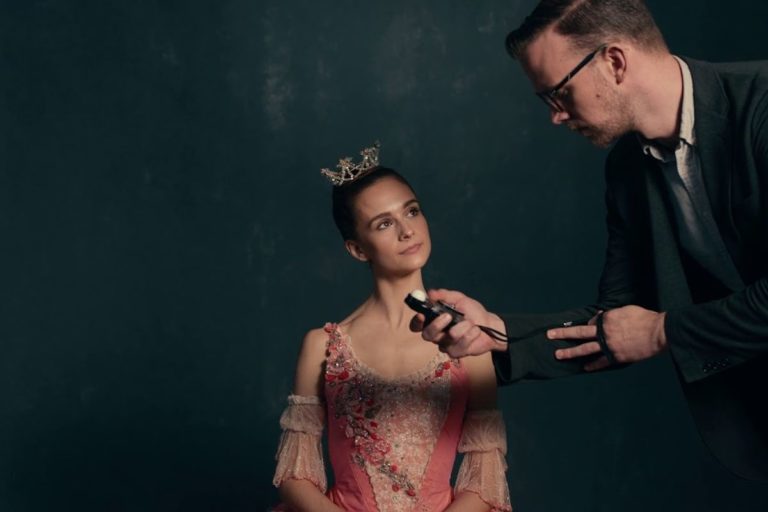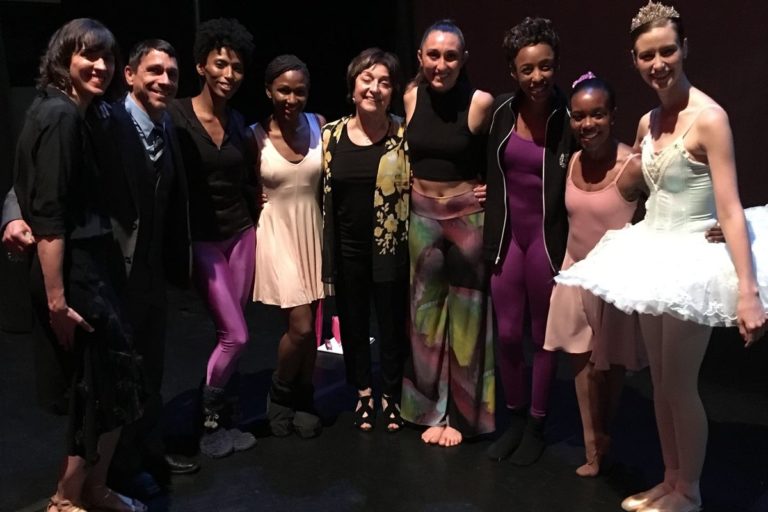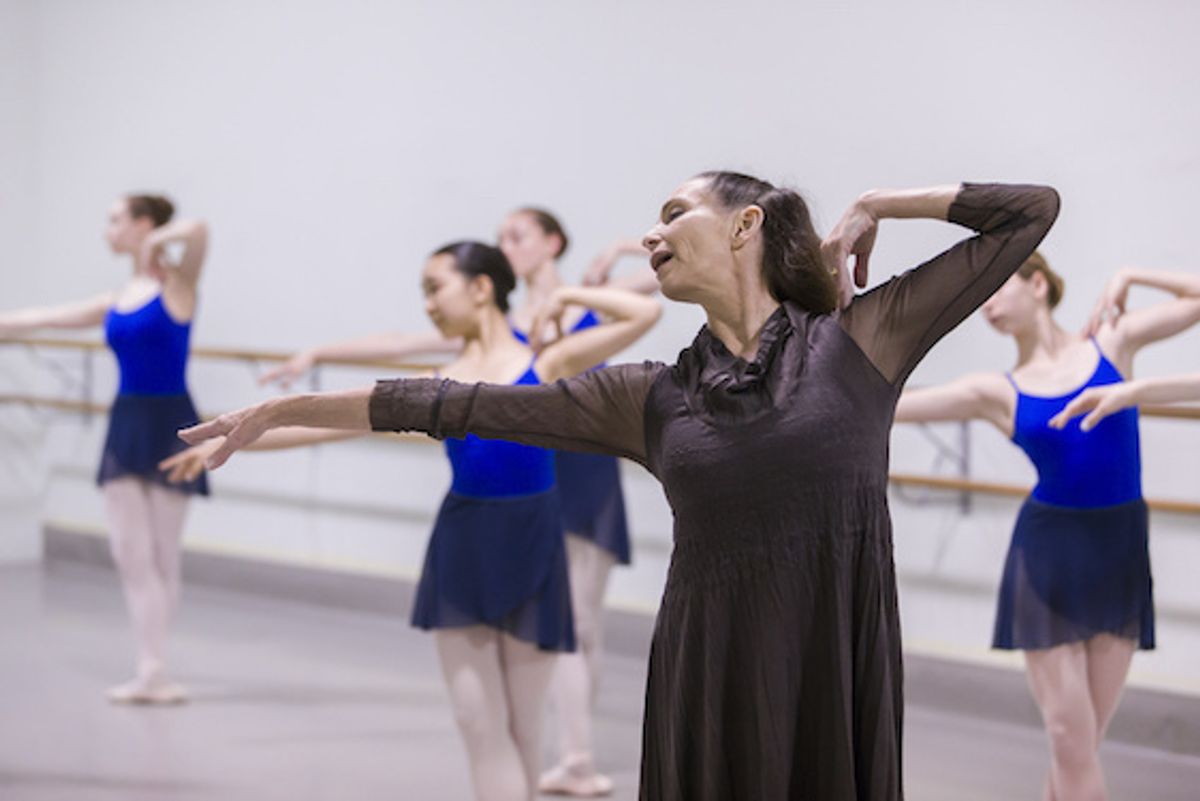
A gale-force storm is howling outside the International Ballet Academy in suburban Seattle. Inside, where faculty member Stephanie Saland is teaching an intermediate class, there’s far less energy.
Saland, gamine-like at 64, urges the 10 self-conscious teenage girls to flap their arms and growl like animals. “Please, get goofy on me!” she laughs. “It’s only a ballet class!”
Slowly the girls let go of some of their inhibitions and move with more abandon. “That’s a start,” Saland says, laughing.
Watching her, you get the feeling that if Saland could meld minds with these girls, like Star Trek’s Spock, she’d pour everything she knows into them, about ballet and about life itself.
This suburban studio isn’t exactly where you’d expect to find a dancer with Saland’s credentials. A product of the School of American Ballet, she spent more than two decades dancing with New York City Ballet, working directly with George Balanchine, performing as a principal for most of that time.
Most of these students aren’t headed toward professional dance careers, but Saland firmly believes that anyone who studies with her, no matter their innate talent level, has the potential to dance to their own abilities. She demands three things from every student: receptivity, emotional availability and curiosity. Plus a little bit of joy.
An Atypical Path
Saland’s path to a professional ballet career was atypical, to say the least. Like many girls, Saland took occasional dance classes in a studio near her Long Island, New York, home. But it wasn’t until the age of 14 1/2 that she decided to pursue ballet seriously, auditioning for the School of American Ballet.
Saland was about four years behind the other students when she entered SAB; she was placed with 11-year-olds. Within three months, she moved up, eventually earning a spot in one of Suki Schorer’s lecture demonstrations. That’s where Saland caught George Balanchine’s eye.
Balanchine had come in to watch the demonstration, but Saland didn’t notice. “I was in the back, having a ball with my partner,” she says. Another student told her afterward that Balanchine only had eyes for her.
He kept coming back to watch her. He saw potential and eventually brought her into New York City Ballet as an apprentice at age 18.

“She encourages a certain intelligence that ignites the intuition. It develops an honest way of being in the art of dance.” –Tracy-Lea Bloch. Photo by Lindsay Thomas
Saland says that’s where the really hard work began. “Balanchine decided he was going to give me the things that didn’t suit me so I could build a technique,” she says. “I had not yet developed any facility for anything fast or sharp or architectonic.”
Balanchine taught company class, and Saland struggled to keep up. He cast her in ballets like Square Dance and Symphony in C, which she says didn’t suit her physiology or her constitution.
Six months into Saland’s tenure, after a performance of Emeralds, principal dancer Gelsey Kirkland took her under her wing.
The Impact of Mentors
Kirkland told the young corps member that, while she liked the way Saland danced, she didn’t present herself well as a performer when she wasn’t moving. The principal dancer took her to the independent teacher Maggie Black. It was almost unheard of for a corps member to reach outside NYCB for instruction. But Saland didn’t realize that. She was most interested in finding mentors who could give her the tools to advance as an artist; she found those mentors in and out of the ballet world.
One of these mentors was Geta Constantinescu, who was working with the early developer of Gyrotonic. Private lessons with Constantinescu gave Saland insights into how to modulate her energy and movements. Her physical therapist Marika Molnar, at NYCB, helped her to understand more about anatomy and physiology, and how to use that knowledge to enrich her dancing. Stanley Williams at SAB also heavily influenced Saland with his understated, refined approach to teaching.
This early training underpins her teaching philosophy. Even in her classes with young teens, Saland takes care to explain exactly where a movement originates in the body. When the girls practice rising up in demi-pointe, Saland kneels next to one student, taking hold of her foot to explain which metatarsal should bear the majority of her weight. She moves her hands up the student’s leg to indicate the path of the musculature that makes a jeté possible.
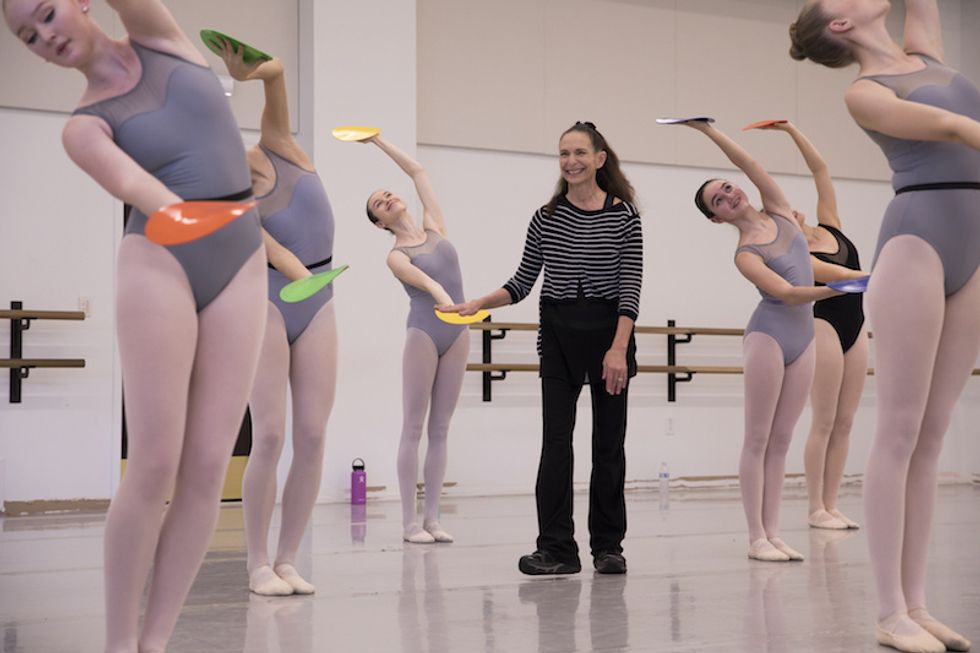
“She helps students enter a spirit of exploration.” –Peter LeBreton Merz. Photo by Lindsay Thomas
Saland never planned to teach when her career ended. After she retired in 1993, she wanted to step away from ballet altogether. But Saland moved to join her romantic partner in Seattle; he had taken a job as ballet master with Pacific Northwest Ballet. Partly at his urging, Saland taught some classes at the PNB school.
She soon realized that she wasn’t interested in simply running her students through ballet technique; she wanted to develop the artistic impulse in each of them. She credits a qi gong instructor in Seattle with helping her to find the means to do that. Working with him, Saland says she learned how to peel back the “layers” she’d constructed between what she felt was her true self and the dancer onstage. She believes artistry resides in the intersection of technical mastery and a dancer’s connection to her emotional, even spiritual, motivations to dance.
“There needs to be some kind of conversation with oneself to wonder why you’re doing what you’re doing, and is it actually communicating anything,” Saland says.
She brings that conviction to classes of every level, and it has won her fans around North America.
Instilling Intelligence
“She has an openness to new ideas and approaches,” says Peter LeBreton Merz, director of Ballet West Academy, where Saland is a frequent guest teacher. “She helps the advanced students, especially, open their minds to new approaches to ballet technique, and to enter into a spirit of exploration.”
Rather than beginning class with a long session of barre work, Saland prefers to move the students into the center of the room. She believes it helps them with balance and strength. She tells the students to avoid looking in the mirror, to close their eyes and just feel their bodies move. Saland leavens the hard work with frequent jokes, trying to put the students more at ease. She urges the students to have fun, to reconnect with the joyful love of movement that led them to study dance in the first place.
“I’m basically a trickster,” she says, laughing again.
Merz says the students love her style.
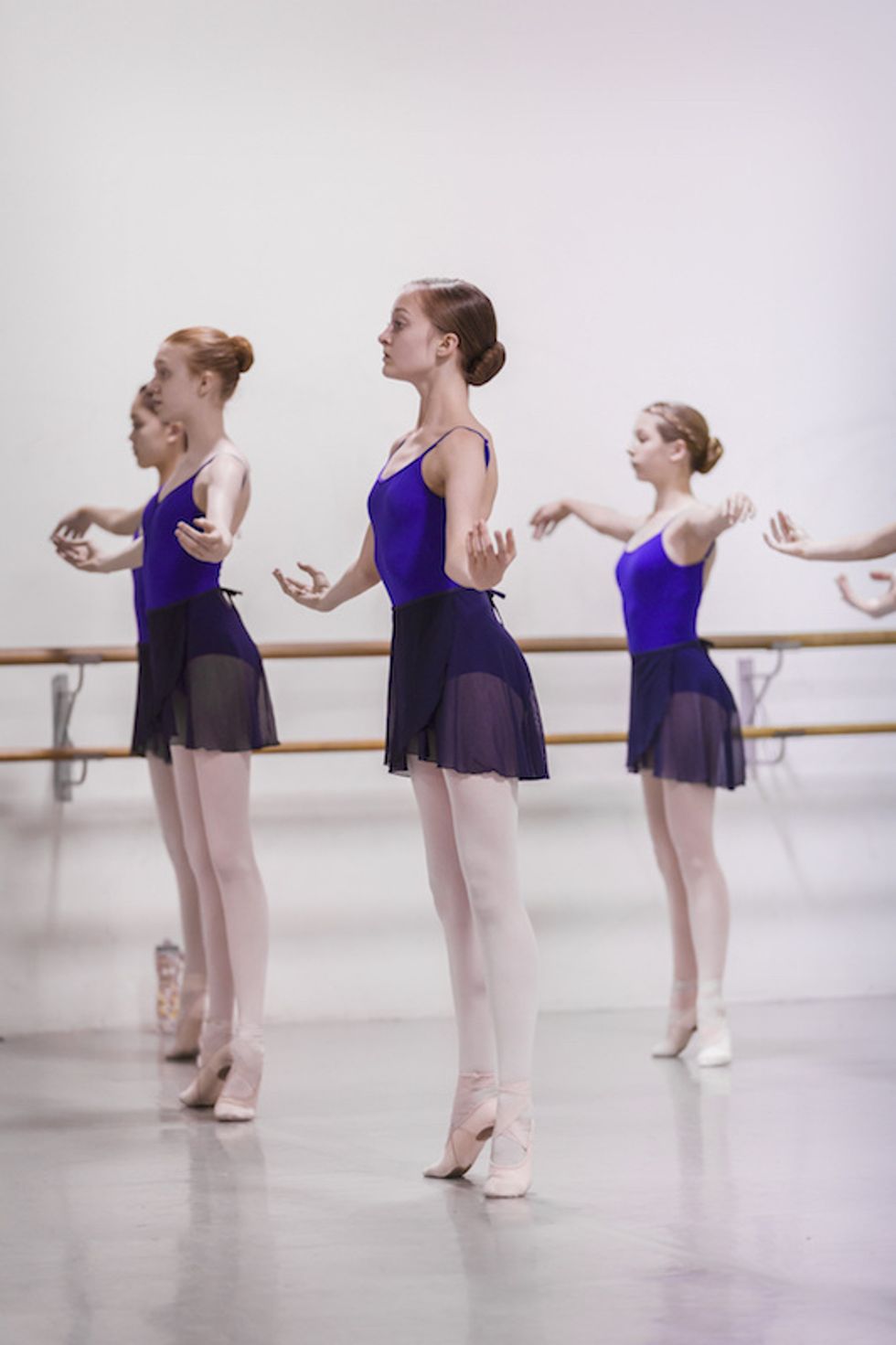
Photo by Lindsay Thomas
Merz also values Saland’s long experience with the Balanchine repertoire, and her personal history with the choreographer. Both Ballet West and its academy have incorporated more Balanchine choreography into their own repertoire.
“It’s so valuable to offer the students a chance to work with somebody who worked directly with Mr. B,” says Merz.
Tracy-Lea Bloch, artistic director of Ballet Bloch Canada, regularly brings Saland to Vancouver as a guest instructor. Saland may love a good joke in the studio, but Bloch calls her “intense” and focused on getting the best out of every young dancer. Bloch says her students are always inspired after Saland is in residence. “She encourages a certain intelligence that ignites the intuition,” Bloch wrote in an e-mail. “It develops an honest way of being in the art of dance.”
Saland is also a regular instructor with Youth America Grand Prix. Though she says she doesn’t really believe in competition, she does value the scholarship assistance that goes to deserving competitors, who might not otherwise be able to pursue their ballet training.
While Saland spends a lot of time teaching in ballet programs, she’s also energized by people who aren’t “serious” students. One of her favorite classes is made up of women between 30 and 50 years old. She’s been meeting with them almost every week for more than a decade. Although she hesitates to call this regular gathering a ballet class, Saland infuses the 90 minutes with ballet steps and terminology. She’s as dedicated to these students as she is to the aspiring professionals at Ballet West Academy, or the private students she mentors.
Watching Saland at work in the studio, it’s clear that teaching is her true passion. She loves dance, but after 50 years, she’s learned that movement is also a path for self-acceptance, and for her, a means to contentment. That’s the biggest lesson she wants to impart to students of all ages: Forget your inner critic and surrender to the joy of movement.
